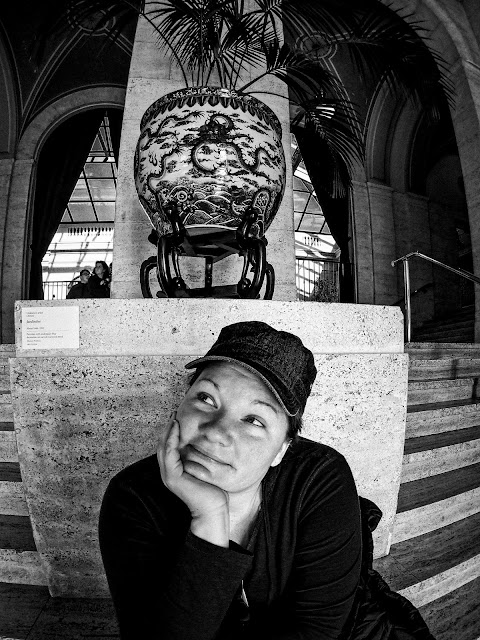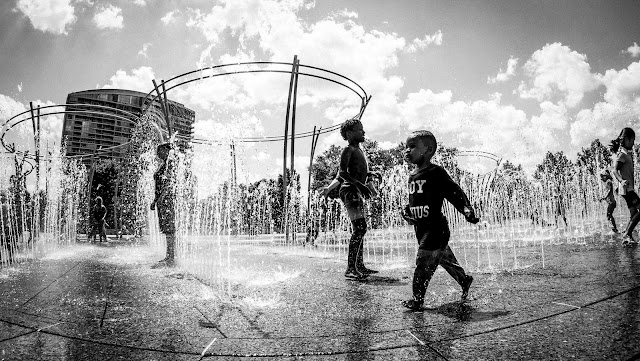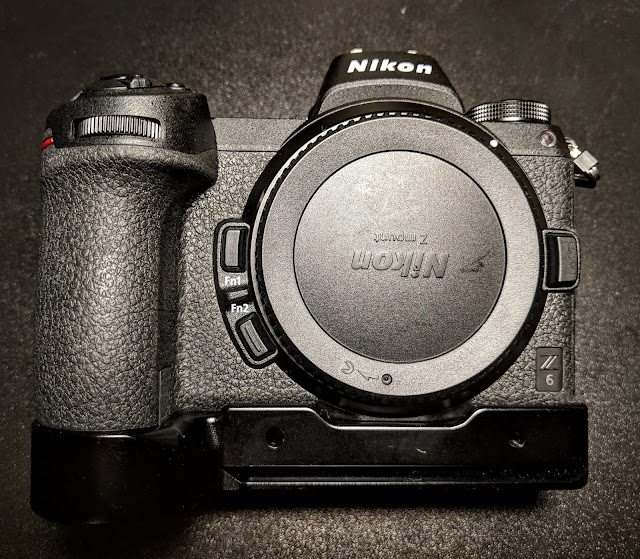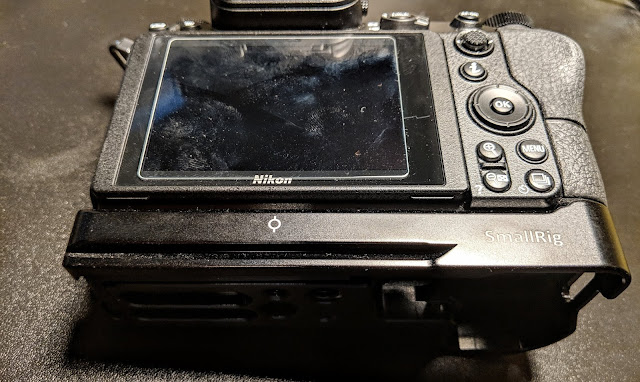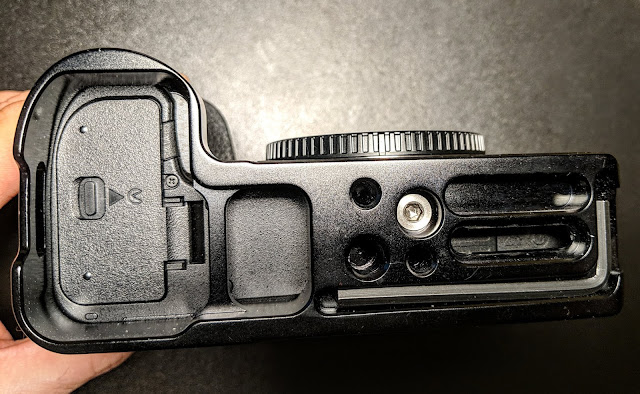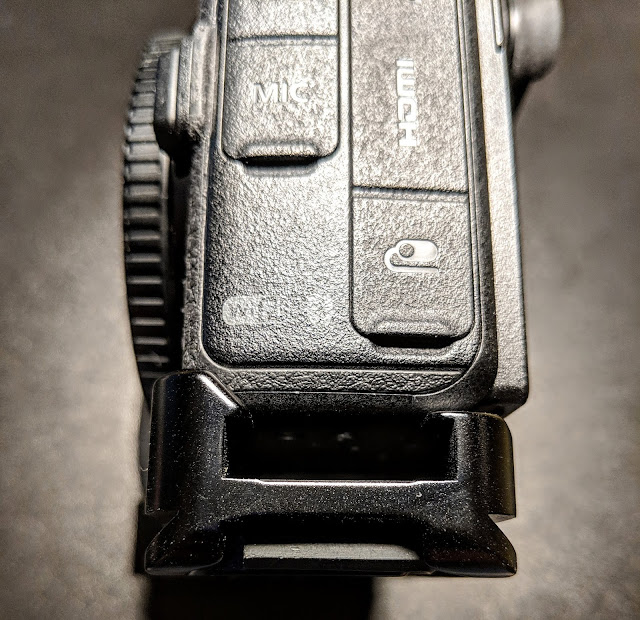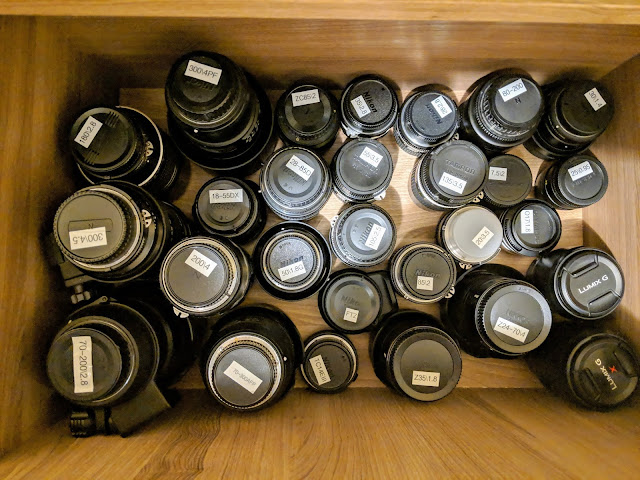Background
We dig deeper into the new Nikon Z mount with the purchase of the new Nikon 35mm f/1.8S prime lens.
Is it as good as others have said? How does it stack up against other mirrorless prime lenses in the same focal length and field of view?
Let's go on that journey together and find out!
Handling/Size/Weight
Compared to other 35mm prime lenses in the Nikon ecosystem, this one is actually larger than most. However, do not let the size of the lens lead you to believe that it is a heavy brick. Surprisingly, in hand, this is a light lens.
 |
| top down view of the Nikon Z (left) and Nikkor-S Auto manual focus lens (right) |
 |
| side view of the Nikon Z (left) and Nikkor-S Auto manual focus lens (right) |
|
This is a metal and plastic construction, with a very simple layout. You've got the control ring that can be used for manual focus, ISO control, exposure compensation among other things. This ring takes up most of the lens exterior.
The only other option on the lens is the auto or manual focus switch.
The control ring is easy to use and has a smooth operation.
On the Z6, it balances well.
The lens comes with a hood that clicks into place with a positive action and I have no fear of it coming off the lens by accident.
My only concern with the metal focus rings is using them in cold weather. Not that the metal itself is an issue, I'm thinking more about the shooter! If you don't want to use gloves while shooting in cold weather, it can be a challenge on your fingers holding that metal with bare skin.
Weather Sealed
Nikon made all their initial Z mount lens offerings weather sealed, and it is my understanding that they are to the same level as the Z6 and Z7 bodies. I've not had a reason to use the lens in inclimate weather. I have not personally tested the weather sealing, but I have no reason to doubt it's effectiveness.
Image Quality
Having used quite a few 30mm to 35mm lenses in my day, including the Nikon 35mm f/2D, 35mm f/2.8 Nikkor-S Q both of which are capable lenses - they are not in the same league as the Z-Mount prime.
Even shooting at f/1.8, this lens reminds me of the joy I experienced the first time I used my Micro Four Thirds primes. More than acceptable sharpness wide open. Shooting at f/1.8, you have more of an issue worrying about having sufficient depth of field on your subject than you do losing sharpness, especially if you are close to the subject.
This lens is SHARP, no doubt about it.
Not only is it sharp in the middle, but edge to edge we found no major issues with the copy we have. In the same way that we were pleased with the edge to edge performance of the 24-70/4S, this lens is just putting its money where it's aperture is and delivers every time.
You know what time it is! Time to put the images front and center and give you the opportunity to determine for yourself what you think.
The below 2 images show the ability of the lens at wider apertures, Given the close focus range, you can see in these images that the depth of field is small, but the in focus areas are indeed sharp. Thanks to Kylo and Ren below for being unwilling models.
The day I bought this lens, it was non-stop rain for the entire day, so these are my first shots. :)
I did process these images for the look I was wanting, so just take into account that these are not straight out of camera JPG or RAW.
I believe that a review of images should be about what the lens/camera/system is capable of producing. Straight out of camera(SOOC) is a good baseline, but you can get a ton of those kinds of samples elsewhere - and you've probably already done so.
 |
| 1/100, f/2.5, ISO 7200 |
 |
| 1/60, f/2, ISO 1600 |
 |
| 1/400, f/2.2, ISO 100 |
 |
| 1/200, f/1.8, ISO 100 |
 |
| 1/6400, f/1.8, ISO 100 |
Focusing
As mentioned about the 24-70/4S in z mount, the AF is quick and silent. When first using it, there is a moment when you do not realize that it is in focus...and I'm sitting there waiting to hear the AF motor whir or the VR to kick in. Yeah, both are silent. Something to get used to for sure.
Even in very low light, from f/1.8 to f/2.8, this lens and the Z6 focused with little to no fuss. Yes, as with any system the AF was a bit slower in lower light, but I would not call it slow or pokey.
This may be more about the Z6 than the Z35mm f/1.8S, but when I did the portrait shoot, I used the auto area AF mode with face detect. I shot over 250 images during that multi location portrait shoot and when I went back to see what was in focus and what was not - I found 2 in total that were not. That's not a bad hit to miss ratio.
Even in lower light, I had to be more aware of slower shutter speeds introducing blur than I did the AF.
Using the face detect AF, as soon as my model was in view, the green box snapped onto her face. It made portrait shooting more efficient and the fact that I don't have to worry that the AF is off is great.
I will admit that I have never used the eye AF features available on other cameras. They very well might be better, but in this implementation on the Z6, having the face and eyes in focus was good enough for my needs.
VR
No VR in the lens, IBIS in the camera body will give you 5 axis IBIS. This seems to work well and as advertised. No complaints. Again, this is more about the Z6 than the lens.
Bottom Line
I debated whether to get this lens or not. I have some friends that really like the less expensive f-mount FX 35mm f/1.8G. They are getting great results with that lens and the FTZ adapter. I was hooked on this lens when I was given the opportunity to test it out with the local camera stores demo model.
I, for one, am on the bandwagon that will sing the praises of this lens. 35mm may not be the focal length for you, but if it is then this is one of the best 35mm f/1.8 lenses that I've ever used and highly recommend it.
If you are on a budget or are just not a big prime user, but want to have one around for those times when you'll need light gathering ability faster than the native 24-70/4 can offer, then you might want to pursue looking at adapting f-mount AF-S and G options. We've done that very thing with the Nikon 50mm f/1.8G and are satisfied with the results.
Let's answer the question I asked initially. Is the Z35mm f/1.8S worth it? In my eyes, yes it is. So far, employing it in an environmental portraiture capacity in low light, it did very well and I'm not sure I would have been happy with just the f/4 on the Z24-70mm or even the f/2.8 of the Nikon 24-70mm f/2.8G adapted.
 |
| 1/40, f/1.8, ISO1250 |
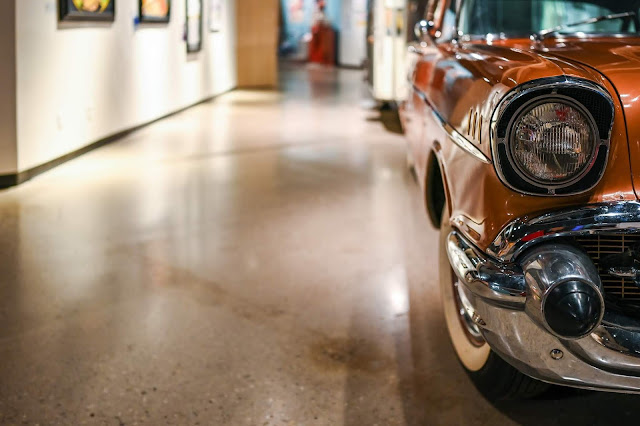 |
| 1/80, f/1.8, ISO 800 |






